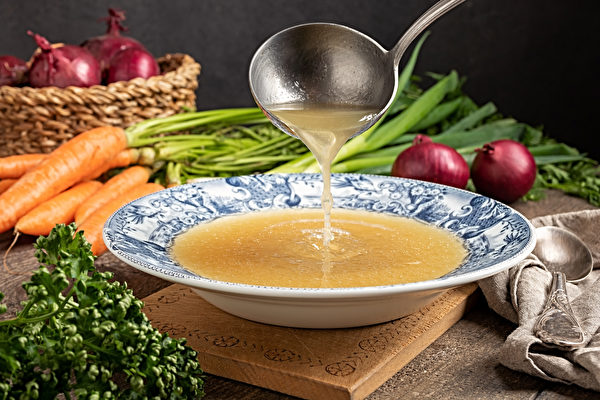How to Cook Delicious Soup: A Guide Through the Science of Food
When it comes to cooking soup, the question of how to make it tasty and what ingredients to use always arises. What are the secrets to simmering a rich broth for ramen or making a clear Western-style stock? Do you need to simmer the soup for a long time for it to taste good? This article discusses the key steps in cooking soup using the concepts of food science.
To create a delicious soup, which type of ingredient is best to use?
a. Skin, b. Meat, c. Bones
Answer: Meat. The flavor of animals comes from the amino acids found in meat. When cooked, meat releases about 40% of its weight in juices, which becomes the base for a flavorful soup.
Ramen often uses pork bone broth or chicken white broth as a base. What is the secret to making a rich white broth?
a. High pressure, b. Long cooking, c. Rapid boiling
Answer: Rapid boiling. A white, opaque soup indicates the presence of many suspended substances, which could be amino acids, water-soluble proteins, or fats.
Continuously boiling the soup acts as a mixing function that emulsifies it. When the soup boils vigorously, it helps to scrape off and evenly mix the above substances. Whether making pork bone broth, chicken white broth, or a creamy fish broth, it is essential to let the soup boil vigorously.
If using a pressure cooker, the meat may become tender quickly, but the soup may lack flavor. This is because as the pressure increases, the boiling point of water rises. While this high temperature makes the meat tender, without a rolling boil, the soup ends up clear but tasteless.
What can you add to the soup that will prevent it from turning clear?
a. Egg whites, b. Chicken, c. Vegetables
Answer: Vegetables. Proteins like egg whites and water-soluble proteins can stick together due to their molecular sizes.
As mentioned earlier, a cloudy soup contains many amino acids and water-soluble proteins. Adding an egg white or chopped chicken after cooking the soup will absorb impurities. Once the soup boils again, the egg white or chicken will float on top, acting as a filtering net that clarifies the soup.
However, this process removes some flavor components, resulting in a lighter taste. Adding vegetables to the soup enhances the flavor. Some people initially cook vegetables with meat, but this method can make the soup murky. It is recommended to puree the vegetables after cooking the meat and then add them directly to the soup for a more homogeneous texture.
What step is incorrect if you want to drink clear soup?
a. Soak the meat in hot water before cooking the soup, b. Put the meat directly into boiling water, c. Sear or stir-fry the meat first.
Answer: Option b. Putting the meat directly into boiling water allows many molecules from the meat to mix into the soup, resulting in a cloudy broth.
As for option a. soaking the meat in hot water before cooking, this process is similar to blanching.
Blanching involves putting the meat in cold water, bringing it close to a boil, then turning off the heat and cleaning the meat. During blanching, water-soluble proteins dissolve, ensuring the soup remains clear.
Blanching or soaking pork in warm water first has the additional benefit of removing any gamey taste. The gamey flavor of pork comes from hormonal substances that dissolve along with water-soluble proteins during blanching or soaking in warm water.
It is important to note that placing pork directly into boiling water seals the surface of the meat, preventing blood from seeping out and thus failing to remove any gamey taste.
Option c. searing or stir-frying the meat first creates a burnt, protective layer on the meat’s surface, making it harder for water-soluble proteins to escape. This method results in a clearer soup. Additionally, the Maillard reaction enhances the flavor, making it more enjoyable compared to pork. However, using seared or stir-fried meat will give the soup a darker color, like a transparent brown solution.
In conclusion, what is the optimum cooking time for simmering soup to make it taste good?
a. Yes, it should simmer for at least a whole day, b. No, it depends on the ingredients.
Answer: It depends on the ingredients.
– Meat Soup: Chicken, beef, pork, and other meat soups generally taste better when simmered for a longer time, usually several hours. Since our taste buds cannot detect large molecules well, simmering the soup longer helps release the small molecules from the meat into the soup, creating a richer flavor.
– Vegetable Soup: Many components in vegetables are prone to spoilage, causing them to develop an unpleasant odor if left overnight. Similarly, cooking vegetable soup for too long can alter its taste. Hence, many people prefer sautéing and pureeing vegetables before adding to the soup just before consumption to avoid overcooking and odd flavors.
– Seafood Soup: Fish protein is delicate, and therefore, fish soup is not suitable for prolonged boiling.
Unlike land animals with firm body structures, fish living in water have buoyancy, loose body tissues, and tender flesh. Moreover, their collagen structure is weaker, making fish soup unsuitable for extended simmering as it can easily alter its flavor.
With crustaceans, in my personal experience, longer simmering is beneficial. Sautéing shrimp or crab shells a bit longer adds a great aroma to the soup. Additionally, the flavor of crustaceans easily dissolves in oil. An even better approach is to sauté shrimp or crab shells in butter before adding them to the soup for cooking.

